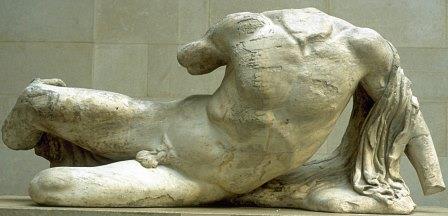
The river god Ilissos has been loaned by the British Museum to St Petersburg's State Hermitage Museum, Russia and will be on display there until mid-January 2015 before returning to London
So the British Museum "under a cloak of secrecy both for security and to ensure maximum impact" has lent a pedimental sculpture from the Parthenon to the Hermitage. Could we suggest a third reason? To delay and manage the predictable surge of outrage which this action has caused not only in Greece, of course, but in many countries around the world where groups campaign for the reunification of the sculptures of the Parthenon, not least here in Britain where opinion poll after opinion poll returns a substantial majority in support. The sculpture was transported by air and not by the more obvious means of road transport, perhaps to avoid formal or informal intervention en route. However the British Museum may well find that it has shot itself in the foot. Its action will widely be construed as at best insensitive and at worst frankly provocative and give a fresh stimulus to the campaign for the reunification of the sculptures of the Parthenon.
The accompanying news management by the British Museum scales new heights of disingenuousness. Lord Elgin did not "rescue" the sculptures. He collected them. His original purpose was not to introduce the British public to the wonders of Greek art. It was to decorate his home in far northeast Scotland, where precious few of the British public would have had the chance to see them. By cutting them from the building he was not setting an example followed by the later Greek Government. It was mutilation. It never occurred to anyone to demount the sculptures until the advent of industrial pollution and acid rain. Their "reputation as art rather than decoration" was not "forged in London". They were art from the moment of their creation. They were never mere decoration. They were integral elements of a building which was itself a work of art.
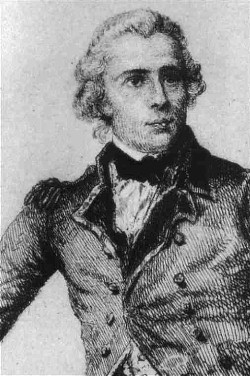
The 7th Lord Elgin
The cultural warming of "chilled" relations with Russia is at the expense of a bonfire of relations with Greece and public relations in other countries and closer to home. The display of the Cyrus cylinder in Iran is not a good comparison. Are there no Russian treasures in the museum's collection which they could have loaned? Why a Greek treasure which they will not allow into Greece?
It is not true that they would loan to the Greeks but they would refuse a loan on grounds of disputed ownership. In 2002 they refused a request from culture minister Venizelos for a loan, and in 1995 culture minister Pangalos said, "Let's put aside arguments about ownership and talk about where the sculptures should be". It is not only for "more than 40 years" that Greece has requested their return. Published documents exist to show that the demand has been constant from the very inception of the Greek State as a legal entity.
Then what about the statistical conjuring trick of saying that 30 per cent of the 30 per cent that has been lost is in other museums. That sounds a lot until you realise that that is 9 per cent. And even that is an exaggeration when you add up one metope and one slab of maybe a metre of frieze in the Louvre and a few small fragments elsewhere. But perhaps the most egregious example is the way in which the funeral oration of Pericles is traduced. Yes, Pericles did say that the whole world is a monument to those who die in war. It was his equivalent of our "age shall not wither them..." Intoned annually at memorial services. It stretches his meaning too far to transfer this to the sculptures as ambassadors of Athens in foreign lands. In fact Pericles in the same oration refers to "mighty monuments of our power which will make us wonder of this and succeeding generations." He did not need to point. His audience would almost certainly have looked across the Acropolis, crowned with the Parthenon. The Parthenonis still there. It does indeed immortalise Periclean Athens. Half (to be precise, just under half) of its surviving sculpted elements are there. Just over half in London. Surely the onus of justification is on NOT bringing them all together, and Athens is the only place where that can happen.
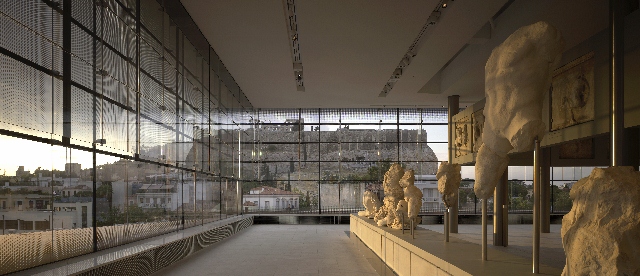
The Parthenon Gallery in the Acropolis Museum, the one place on earth where it is possible to have a single and aesthetic experience simultaneously of the Parthenon and its sculptures
Let us be clear: the case for the reunification of the Parthenon sculptures rests on the fact that those in the British Museum are part of an artistic unity with those in the Acropolis Museum and together they are part of a unity with the Parthenon. Separated, their artistic integrity is impaired. In some cases single sculptures are separated thus.
It is not a matter of who owns them, it is a matter of where they should be. Indeed argument about ownership is a diversion and distraction from the cultural arguments on which this matter should properly be resolved.
The sculptures of the Parthenon do not need the British Museum to demonstrate their quality and importance. No more does the British Museum need the Parthenon sculptures to prove its excellence. Sure they enhance it. But in essence they are essentially exemplars to illustrate its cross cultural narrative, chosen because of their existence in the museum's collection as a result of an accident of history - the divorce do the 7th Lord Elgin which bankrupted him and forced him to sell his collection to the government in a fire sale.


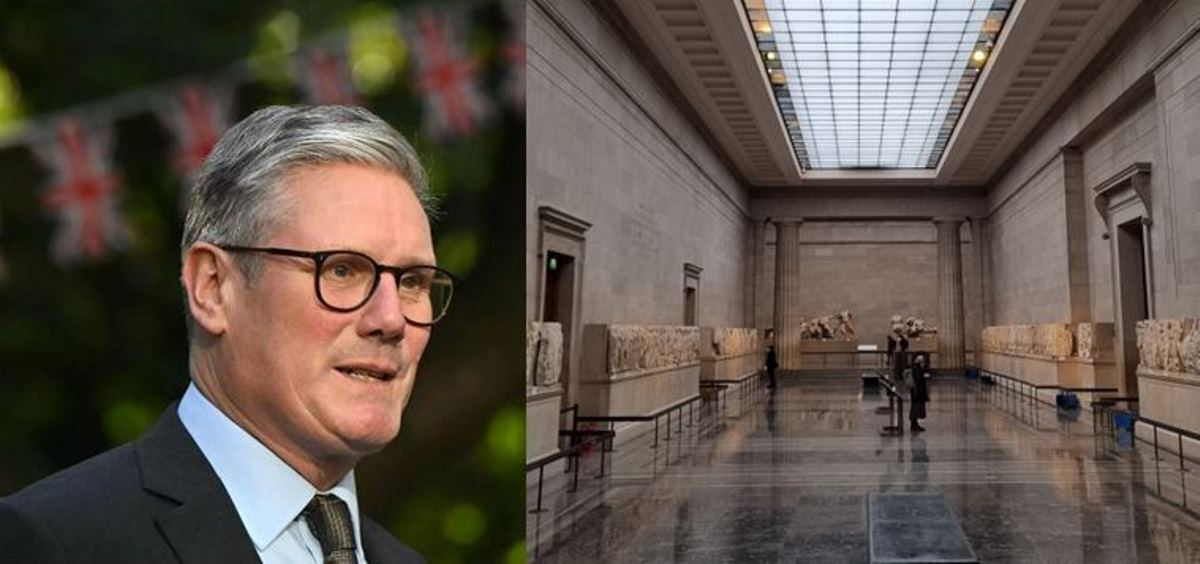
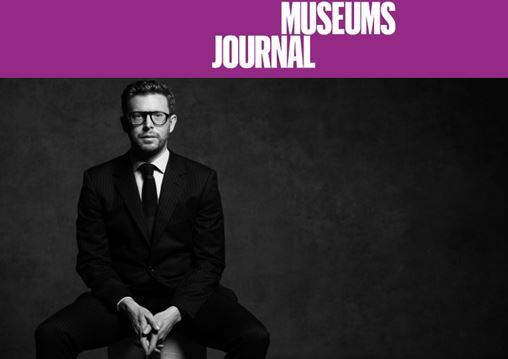

Comments powered by CComment